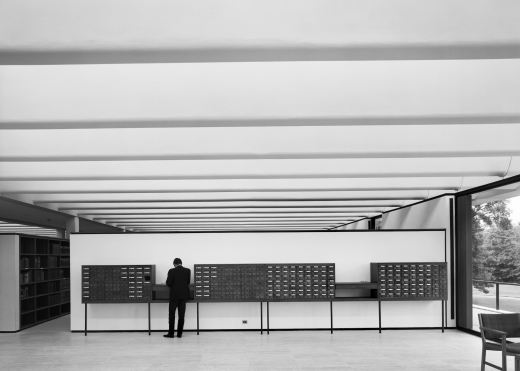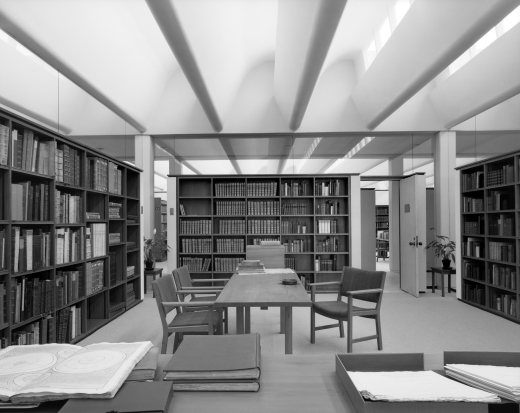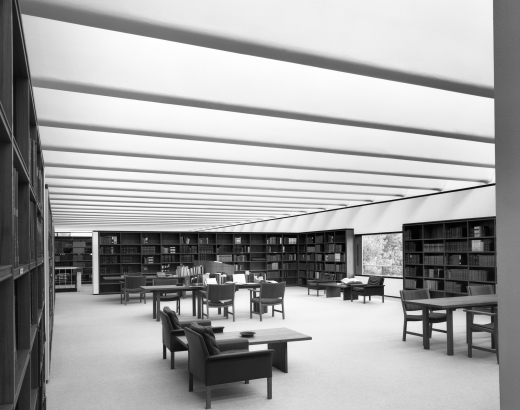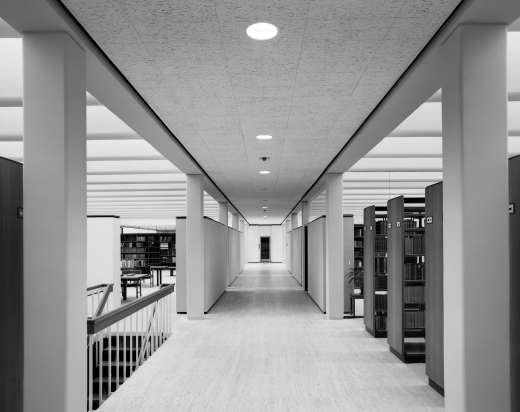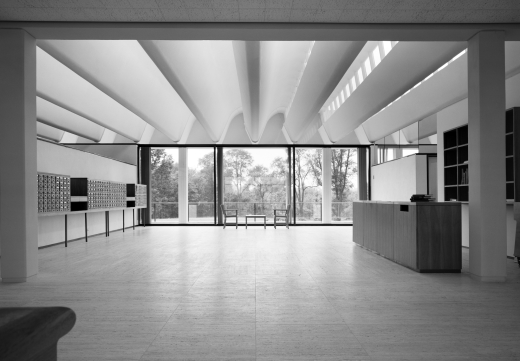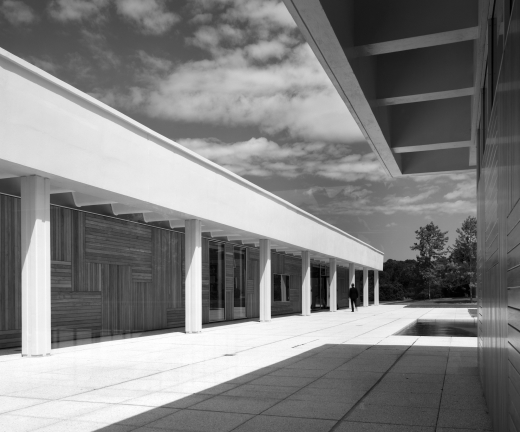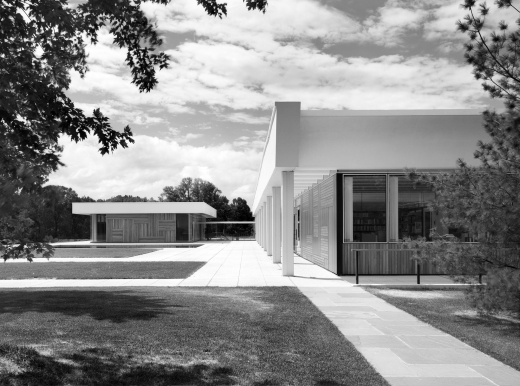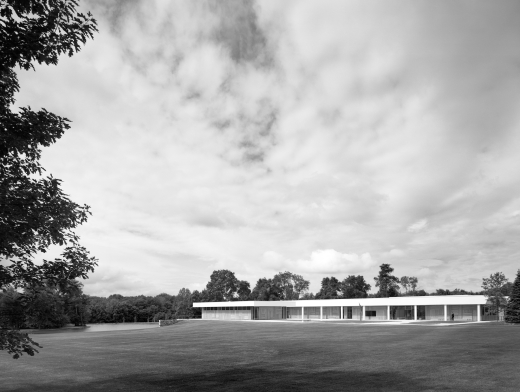Background
The elegant Historical Studies and Social Sciences Library at the Institute for Advanced Study in Princeton, built in the early 1960s by Wallace K. Harrison, is under threat. Resulting from an exemplary collaboration between the architect of the United Nations and the physicist J. Robert Oppenheimer, who headed the Institute, this graceful building is a well-kept secret, deeply ensconced in the recesses of the campus, invisible from the road and known only to its users. The minimalist vocabulary of the interior is striking, but the library's most salient feature is its inventive roof structure, which diffuses a warm and indirect daylight throughout the reading rooms.
Issue 5.10.23
This elaborate roof structure that is at the core of the current crisis. Rather than fixing its recurrent leaks and other such purely technical issues, the Institute for Advanced Study commissioned the firm of Kimmel Bogrette to envelop the building, creating an additional floor. This new massive construction would be suspended over the existing edifice, without actually touching. By swallowing entirely the roof, it would destroy its architectural identity. The proposed design assembles all the clichés of commercial architecture as if it were generated by a computer. It is as bulky and obtrusive as Harrison’s gem is delicate and discreet.
We cannot understand why the Institute for Advanced Study, with its distinguished track record of quality architectural commissions (from Marcel Breuer, Robert Geddes and Cesar Pelli, to – most recently – Steven Holl) is ready to sacrifice rather than preserve one of its iconic buildings. We are horrified by this careless design, which would ruin a significant testimony of American modernism, and urge the Institute for Advanced Study to reconsider this project and search for other ways to satisfy its need for additional facilities.
°®¶¹app and °®¶¹app/New York Tri-State penned a joint response letter to the IAS on May 5, 2023.
Many thanks to Esto for the Ezra Stoller images from 1966.

